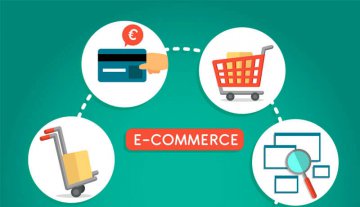Many existing and potential store owners are being sensitized towards the potential of Ecommerce. They realize that there are numerous benefits that one can avail of by using this platform. However, building an Ecommerce store doesn’t mean that you would be the next big thing. There are various tasks that need to be seamlessly performed in order to attract more success. Some store owners make the mistake of completely disengaging themselves from the development and marketing process. Their continuous and active involvement in the entire process is the key to success. Here are 7 tips that can assist you in giving a fillip to your Ecommerce success:
1. Define your business mission, values & goals: There are few sources of differentiation left with companies. Most corporations offer similar style and quality of products and service. Consumers, increasingly, tend to purchase on the basis of their perception, and one way in which they associate with an offering is on the basis of the company’s mission, values and/or goals. Hence, you need to clearly define all of these. This will also help your employees and development partners chalk out a clear path that they are required to take in order to abide by the goals.
2. Know your target audience: The next important step is to know your target audience. A clear definition of the audience holds immense value at all stages of your business operations. Let us take an example. If most visitors to your ecommerce store are expected to be U.S. based women in the age group of 25-30, your ecommerce solution would be different compared to if the visitors are expected to be French males in the age group of 55-60. You need to garner knowledge about their demographics as also the psychographics.
3. Benchmark the competition: You should never ignore the competition. All successful organizations are known to develop a profound understanding of the competition, and act on this insight. You need to, therefore, perform research on the competition and generate ideas on how you could best position yourself in the market.
4. Document the requirement: The next step is to document the requirement. Sometimes, all nuances of the requirement aren’t communicated precisely when they are conveyed verbally. Therefore, it is imperative that the requirement is documented, and a written note is sent to the developers. At this moment, you might take various pertinent decisions about your project. Hence, you find out if the project has to be completed in phases, if there are any unique functionalities, and much more.
5. Fill the gap: As you prepare to document your requirement, it is also necessary to know precisely about the gap that exists between your expectations and your existing solution. Sometimes, a new solution doesn’t manage to fill in the gap completely because the gap was not clearly identified. Hence, such information is pertinent at the time of developing an Ecommerce solution.
6. Marketing: Reaching out to the audience is of essence. You need to market the Ecommerce solution, once it has been developed. You would be advised to hire a dedicated and trained marketing team, who can perform the job for you with complete conviction.
7. Feedback & continuous improvement: Finally, this is one of the most important aspects of having an Ecommerce solution. You need to take feedback from your audience, and always be on the lookout for improving your systems and solutions. Sans this step, you might reduce the significance of all the other steps previously taken.
SUMMARY
Hence, your involvement and dexterous work during the execution of the project is key to its ecommerce success. Ecommerce development companies like WeblineIndia can propel your development and help you achieve success quickly.
















